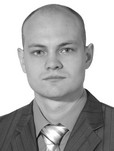Progress tests in Nordic combined training systems
Фотографии:
ˑ:
Associate Professor, PhD V.V. Zebzeev1
Associate Professor, PhD O.S. Zdanovich1
V.V. Zebzeev1
1Tchaikovsky State Institute of Physical Culture, Perm Territory, Tchaikovsky
Objective of the study was to systematize the modern knowledgebase on the progress tests in the Nordic combined training systems based on a theoretical analysis and overview the existing progress test tools and methods. It was found that a competitive performance in Nordic combined largely depends on the individual anthropometrics, physical and technical fitness and functionality rates. High priority in the modern Nordic combined training systems in the long run is given to the progress tests to rate the athlete’s fitness components in every training stage, with a growing role played by the modern computerized technologies. The individual test databases in the Nordic combined training systems help greatly improve the quality of the theoretical and practical service by the performance control and modeling tools, with comprehensive analyses of the individual performance and fitness rates generated by technical, physical, functional and overall competitive fitness rating tests. The tests and analyses may be applied to produce the generalized/ individual performance models and highlight deviations from the ideal progress paths; benchmark every fitness component to find drawbacks and prioritize some training aspects in every stage; and adjust the training process or design a new training system when necessary.
Keywords: progress tests, training system, Nordic combined.
References
- Zebzeev V.V., Zdanovich O.S. Informatsionnaya baza dannykh podgotovlennosti kvalifitsirovannykh lyzhnikov-dvoebortsev [Information database of fitness rates of skilled Nordic combined skiers]. Teoriya i praktika fiz. kultury, 2016, no. 1, pp. 78-82.
- Ardashev A.E., Gelmut V.Ya. et al., Popova A.I. [ed.] Integrativny podhod v upravlenii podgotovkoy lyizhnikov-dvoebortsev [Integrative approach to Nordic combined training management]. Teaching aid. Sarapul: Sarapul publ., 2014, 120 p.
- Lisovsky A.F. Teoriya i praktika pedagogicheskogo kontrolya sportivnoy podgotovlennosti gornolyizhnikov [Alpine skiers' fitness monitoring: theory and practice]. Doct. diss. abstract (Hab.). Malakhovka: MSAPC publ., 1997, 44 p.
- Metodika razrabotki kompleksnyih tselevyih programm podgotovki regionalnyih sbornyih komand kvalifitsirovannyih sportsmenov na chetyirehletniy tsikl podgotovki (na primere lyizhnikov-dvoebortsev RF) [Methods to develop comprehensive targeted programs for training of regional teams of skilled athletes for four-year training cycle (case study of Russian Nordic combined skiers)]. Study guide. St. Petersburg, 2013, 132 p.
- Ogandzhanov A.L., Tsyplenkova E.S., Ovchinnikov P.A. Tekhnologiya upravleniya podgotovkoy legkoatletov-prygunov s ispolzovaniem innovatsionnoy izmeritelnoy sistemy [Jumper training control technologies using innovative measuring system]. Izvestiya TulGU. Fizicheskaya kultura. Sport, no. 4, Tula: TSU publ., 2016, pp. 157-165.
- Ushakov V.I. Kompleksnyiy pedagogicheskiy kontrol v podgotovke yunyih lyizhnikov-dvoebortsev 11-14 let [Comprehensive monitoring in training of junior Nordic combined skiers aged 11-14 years]. PhD diss. abstract. St. Petersburg: LSRIPC publ., 1993, 14 p.
- Sandbakk O., Grasaas C.Å., Grasaas E. et al. Physiological determinants of sprint and distance performance level in elite cross-country skiers. 6 International Congress on Science and Skiing. 2013, St. Christopha. Arlberg. P. 93.
- Vodicar J., Jost B. The relationship between selected kinematic and length of jump of the ski-flying competition. Kinesiology. 2011. 43 (1) pp. 74-81.



 Журнал "THEORY AND PRACTICE
Журнал "THEORY AND PRACTICE